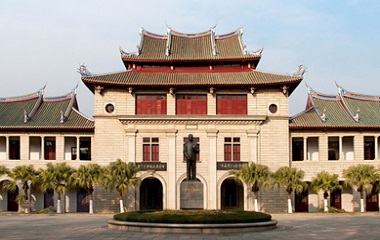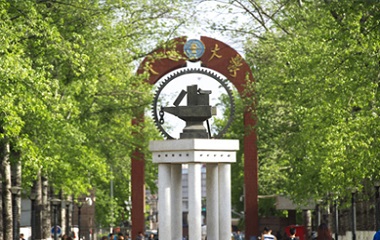[Malaysia] Yew Ying Han, Tsinghua University

Departing from Beijing, the train went north first, then turned west at Hohhot. The further northwest it travels, the green becomes more scattered. My two days and two nights on the train became blurry as the scenes outside flashed by. When I finally came back to myself, the train, bathed in the morning sun, had already been pulled into Dunhuang, a land where East and West converge with exotic colors and fantasies. The morning air was chilly, in sharp contrast to the burning sand and heat I had long heard of.
“It rained a little bit in the past few days in Jiuquan, now even Dunhuang has cooled off,” the driver who picked me up said happily. His joyfulness was infectious—I was cheered up as well.

The city of Dunhuang was not as desolate as I had imagined. On the contrary, everything was in good order. Yet one thing remains distinctive for the city with a history of thousands of years—the smell of business in the commercial center on the ancient silk road. This place used to be a dreamland for Chinese, Sogdian, Huns, Yuezhi and Tibetans.
Dynasties including Han, Wei, Jin, Tang, Song, Yuan, Ming and Qing had come and gone in more than 2, 000 years, leaving traces of wonders and forging the legend of Dunhuang. As a Malaysian Chinese, I had crossed thousands of miles to pay a visit to the pearl along the ancient Silk Road in the northwest of China. It’s interesting that Malaysia is also considered a country along the maritime silk road.
While Malaysians are used to the waves on the seas, they have not seen the desert in the inland areas. On the other hand, Dunhuang is a global crossroads on the land that connects countries across Eurasia. But it might not have paid enough attention to Southeast Asia, which is also part of Asia.
There are a few must-see places in Dunhuang. Mogao Grottoes and Singing-Sand Dune are on the top of the list. I set Mogao Caves on my last day of the trip, because I would like to keep the exciting moment to the last leg of my trip when my imaginations of the various Buddha figures finally became reality. The Singing-Sand Dune was only nine kilometers away from where I stayed, which took me about 10 minutes to reach.
I went to the site at 4:30 am in order to see the sunrise. It was still early when I arrived, and I could see the bright moon and stars. I couldn’t help but think of Tang Dynasty poet Du Fu’s lines, “The stars hang low over the expansive plain, while the moon flows with the river.”
However, the famous poem felt so trivial compared with what I saw with my own eyes. Maybe, the last line of Du Fu’s poem, “A seagull in between the heaven and earth”, was closer in illustrating where I was situated: I was like the bird, chasing the first ray of sunlight on the empty sea of sand.


Walking up the Singing-Sand Dune was also an interesting experience. Accompanied by the crescent moon hanging in the sky, I plodded up the steps on the hill. But the steps were full of sand, and walking on the soft sand turned out to be much more strenuous than I had thought. Panting, I had to slow down.
When I finally reached the peak, the eastern sky was turning brighter, casting a reddish glow to the sand. I felt warm when the sunshine wrapped me up, as if I had become an immortal. It was the first time I came to a desert. The magnificent sand dune made me want to cry out—the helplessness during the climb of the dune had been left behind.

On the last day, I came to the world-famous treasure house of Dunhuang—Mogao Grottoes. The spectacular site had all started from a monk named Yuezun, who had the first cave dug to worship Buddha. More people in the following generations followed and built more caves, making Mogao a sacred place for devout religious followers, a Buddhist kingdom in the seas of sand. The artistic pieces in the caves reflect people’s hopes for cycles of life, or a better life in the next reincarnation.
The paintings of flying apsaras and Buddha figures were all over the walls. The statues of Buddha smiled at people passing by, just as they did in the past thousand years while merchants and monks traveled along. The stories about the library cave drew a lot of marvels and sighs. The past glory and worships have gone with the dirt and sand of history. All these changes of times may be beyond the imagination of monk Yuezun who came here to practice Buddhism.

There is not a place like Dunhuang that can make people feel closer to history, the convergence of cultures and an open mind. The cultures of China, India, Greece and Iran used to converge here, yet at a time this place was forgotten by the world. After innumerous soul searching for Tang and Han dynasties in my dreams, I had at last paid a visit to Dunhuang. As China opens further up to the outside world and keeps rising, the stories of another glorious millennium have been unfolding again.
The story is from "My Beautiful Encounter with China" Essay Competition organized by the Chinese Service Center for Scholarly Exchanges (CSCSE).










